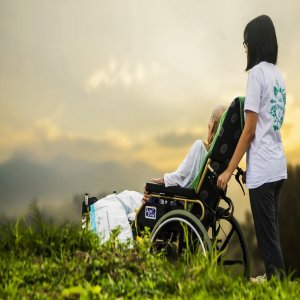
Health Emergencies Pose a Higher Risk to Those with Disabilities
 By Sofía Garduño | Journalist & Industry Analyst -
Mon, 12/05/2022 - 13:53
By Sofía Garduño | Journalist & Industry Analyst -
Mon, 12/05/2022 - 13:53
The WHO published the Global Report on Health Equity for Persons with Disabilities to raise awareness on the consequences of health disparities. The report invites Member States to implement policies that boost health equity for persons with disabilities and offers 40 actions that governments can take to strengthen health systems.
“The overarching aim of the report is to make health equity for persons with disabilities a global health priority,” reads the report.
Globally, there are 1.3 billion people who experience a significant disability globally and this number is expected to increase amid demographic and epidemiological changes, according to the report. As of 2020, there were 6.18 million people living with some form of disability in Mexico, which represents almost 5 percent of the country’s total population, as reported by INEGI.
Although the rights of people with disabilities are ensured in local and international legal frameworks, disparities still exist, specifically regarding health equity. These inequities put persons with disabilities at a higher risk of dying earlier, having poorer health and being more affected by health emergencies than the rest of the population. The COVID-19 pandemic helped to illustrate how people with disabilities suffer from health inequalities, as it placed a heavy burden on them due to their reduced access to routine healthcare, increasing the risk of poor outcomes.
While these inequalities affect all people with disabilities, intersectionality makes each experience a particular one. “Intersectionality is everything that makes up the identity of a human as a diverse being. People with disabilities are not just people with disabilities: we are citizens, men, women or guardians with different lived experiences, preferences and sense of belonging. While identities are to be celebrated, the convergence of these social labels makes us twice as vulnerable to discrimination,” said Lina Rojas, Regional Purpose Manager, Inclúyeme.com, to MBN. For example, persons with disabilities who belong to the LGBTQIA+ community are more than four times as likely to attempt suicide compared to their peers, according to the WHO report.
In this scenario, the report aims to bring health equity for persons with disabilities to the attention of decision-makers in the health sector. It urges them to document evidence on health inequities and experiences in advancing health equity in the context of disability to make recommendations that stimulate country-level action. “We urge governments, health partners and civil society to ensure all health sector actions are inclusive of persons with disabilities so that they can enjoy their right to the highest standard of health,” said Bente Mikkelsen, Director for Noncommunicable Diseases, WHO.
















